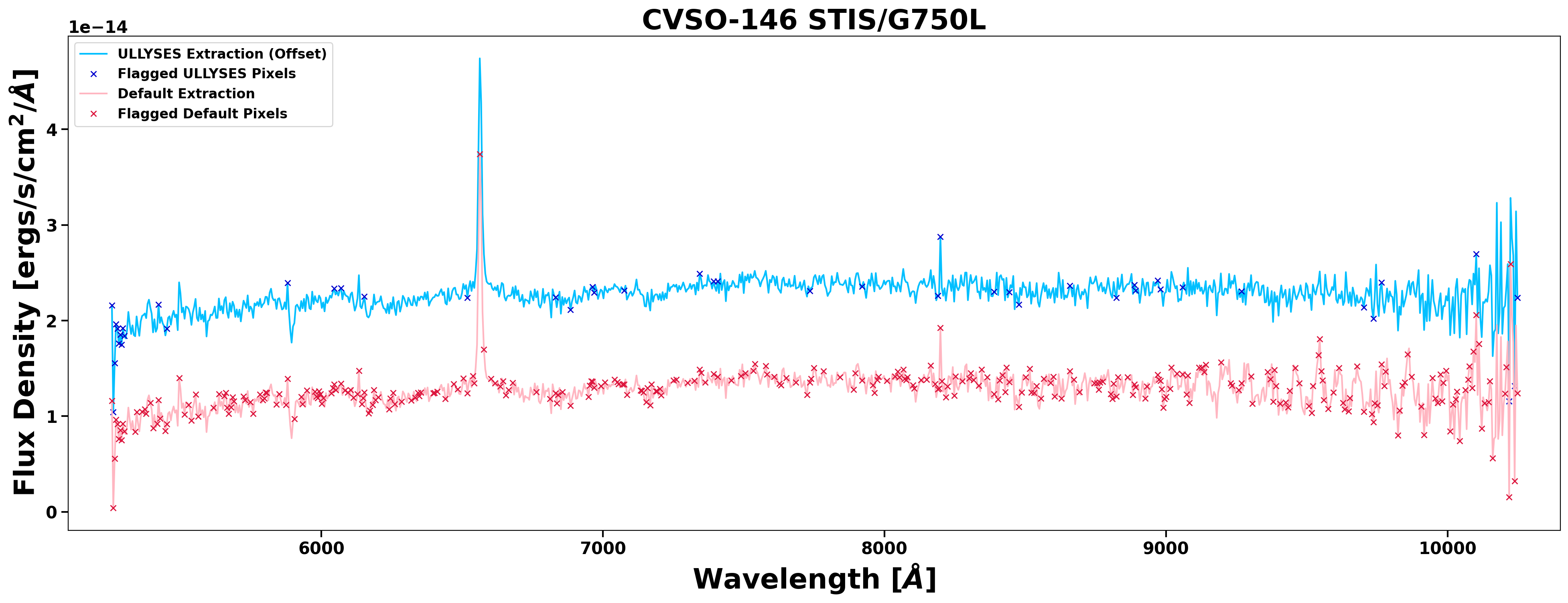Data Release 2 (DR2) consists of coadded and abutted high level science products (HLSPs) for 24 new ULLYSES targets in addition to updated HLSPs for 115 targets previously released in DR1 for a total of 139 ULLYSES targets. Further, we provide HLSPs for 5 additional non-ULLYSES targets, as detailed below.
DR2 Target Breakdown
139 ULLYSES targets:- 126 massive stars from the LMC and SMC - 11 new to DR2
- All 126 massive stars include HST/COS and/or HST/STIS products
- 80 massive stars include HST and FUSE products
- 13 T Tauri stars in the Orion OB1 association and σ Orionis cluster - all new to DR2
- All 13 T Tauri stars include HST COS/FUV, STIS/NUV, and STIS/Optical spectra
- These targets are companions to T Tauri stars within STIS slit observations
- HLSPs for these companions may be used to de-contaminate unresolved observations of the corresponding T Tauri stars
FUSE Data Integrated in DR2
The ULLYSES team has begun to incorporate FUSE data into HLSPs. 80 targets from DR1 have now been updated to include FUSE data. FUSE Virtual Observatory (VO) files were used, with data altered only to exclude wavelength regions of poor photometric quality. The ULLYSES team inspected all FUSE spectra incorporated into HLSPs to ensure data quality was sufficient.T Tauri Star Companions
4 T Tauri stars had companion sources in the STIS slit. These stars are:- CVSO-104: 1 expected companion, identified as GAIA-DR3-3217634157789741952, located approximately 1.36” away from the ULLYSES target. The GAIA identifier was adopted as this companion’s name. The ULLYSES target remains CVSO-104.
- CVSO-36: 1 expected companion, identified as GAIA-DR3-3222268122555927936, located approximately 3.29” away from the ULLYSES target. This companion has a very similar parallax and proper motion to the main target, so they are considered part of the same system. The companion is therefore referred to as CVSO-36B while the ULLYSES target remains CVSO-36.
- CVSO-109: 1 unexpected companion, identified as GAIA-DR3-3217630382512239232, located approximately 0.66” away from the ULLYSES target. This companion is unresolved in the COS aperture. The companion alone is referred to as CVSO-109B. The ULLYSES target alone is referred to as CVSO-109A. The companion plus the ULLYSES target together are referred to as CVSO-109. Since the two sources are unresolved in COS spectra, COS data is only included in the CVSO-109 HLSPs. See Proffitt et al. 2021 for more details.
- CVSO-165: 1 expected companion and 1 unexpected companion. The expected companion is identified as GAIA-DR3- 3217473697810165504, located approximately 5.43” away from the ULLYSES target. The GAIA identifier was adopted as the expected companion’s name. The unexpected companion, located 0.300” away from the ULLYSES target, is not in any catalogue to date. This unexpected companion is unresolved in the COS aperture. The unexpected companion alone is referred to as CVSO-165B. The ULLYSES target alone is referred to as CVSO-165A. The companion plus the ULLYSES target together are referred to as CVSO-165. Since the two sources are unresolved in COS spectra, COS data is only included in the CVSO-165 HLSPs. See Proffitt et al. 2021 for more details. CVSO-165A and CVSO-165B required small extraction box sizes to reduce contamination in the PSF wings. Customized, joint extraction that accounts for blending may yield higher S/N spectra for these objects.
New Product Types Introduced in DR2
Two new product types are being introduced in DR2- “level 0” STIS products and their accompanying calibration parameter files.Level 0 HLSPs are manually calibrated 1-D spectra of T Tauri stars. All T Tauri star STIS CCD observations, and a subset of STIS NUV-MAMA observations, required tailored calibrations. Special calibration steps taken for CCD observations can include: custom hot pixel identification and flagging, defringing for G750L observations, and customized spectral extraction parameters for T Tauri stars and their companions.
Calibration parameter files are YAML configuration files that record all custom parameters used to create level 0 HLSPs.

Updates to HLSP Creation Code
Several updates were made to the ULLYSES HLSP creation code since DR1:- Creation of new level 0 STIS products and accompanying YAML files.
- FUSE VO files are now accepted as input spectra.
- Previously, STIS Data Quality (DQ) flags representing pixels with high dark rate (DQ=16) were ignored for all STIS modes. With the addition of custom DQ flagging for STIS CCD data, these flags are now ignored for STIS/MAMA observations only. The ULLYSES team has verified that the flux in these flagged pixels is negligibly impacted by the DQ=16 flag.
- The HLSP flux weighting method was improved. Previously, the flux was weighted by the gross counts, which biases data that have low or high noise. Flux is now weighted using the product of the throughput (net count rate / flux) times the exposure duration.
- A flux calibration error affecting the reddest ~1.5 Å of COS/G130M 1096 data of FP-POS setting 1 was found in DR1. Previously, this discrepant flux was excluded from coaddition. With the delivery of updated G130M/1096 sensitivity curves, there is no need for this workaround and it was removed from the code.
- The types of spectra that are abutted to create the final HLSP were updated to accommodate a wider variety of input modes.
Caveats and Known Issues
For regions where all contributing datasets have data quality issues, flux will be set to 0.Additionally, the selection of the transition wavelength from one abutted spectrum to the next is currently defined to be the middle of the overlap region. In future releases the transition wavelengths will be selected such that the signal-to-noise ratio in the input spectra at the transition wavelength is similar.

